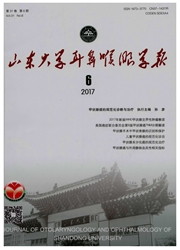

 中文摘要:
中文摘要:
AIM:To compare the effect of anti-vascular endothelial growth factor(VEGF) monotherapy versus photodynamic therapy(PDT) and anti-VEGF combination treatment in age-related macular degeneration(AMD).METHODS:A computerized online search was performed using PubMed,Web of Science and the Cochrane Library.Studies that compared anti-VEGF monotherapy with PDT and anti-VEGF combination treatment of AMD and were designed as randomized controlled trials were included.The means and standard deviations of the best-corrected visual acuity(BCVA),central retinal thickness(CRT),number of treatments and proportions of patients who gained BCVA ≥15,10,5,or 0 letters at 12th month were extracted.A systematic review and Meta-analysis of the comparison of the two approaches was conducted using Review Manager 5.2.Subgroup.A sensitivity analysis was also performed.RESULTS:Eight studies were included.When the subgroup and sensitivity analysis was conducted,the results indicated that in the findings that included the monotherapy group and PDT(standard fluence,SF)group of Kaiser’s study,the patients in the monotherapy group had a better BCVA compared with the combination group at 12th month in the PDT(SF) subgroup[weighted mean difference(WMD):3.54;95% Cl:0.36 to 6.73;P=0.03],and there were more patients who gained ≥15 letters of BCVA in the monotherapy group compared with the combination group in the total result[odds ratio(OR):1.41;95% Cl:1.02 to 1.95;P=0.04].The same conclusion was obtained in the total result that included the monotherapy group and PDT(reduced fluence,RF)group of Kaiser’s study(OR:1.56;95% CI:1.13 to 2.15;P=0.007).However,there were no significant differences in the other indexes between the two therapies.CONCLUSION:We found that anti-VEGF monotherapy is more effective on the recovery of visual acuity than combination therapy and more researches with lager sample size should be performed to study on the effect of the two therapy approaches on CRT and number of injectio
 英文摘要:
英文摘要:
AIM:To compare the effect of anti-vascular endothelial growth factor(VEGF) monotherapy versus photodynamic therapy(PDT) and anti-VEGF combination treatment in age-related macular degeneration(AMD).METHODS:A computerized online search was performed using PubMed,Web of Science and the Cochrane Library.Studies that compared anti-VEGF monotherapy with PDT and anti-VEGF combination treatment of AMD and were designed as randomized controlled trials were included.The means and standard deviations of the best-corrected visual acuity(BCVA),central retinal thickness(CRT),number of treatments and proportions of patients who gained BCVA ≥15,10,5,or 0 letters at 12~(th) month were extracted.A systematic review and Meta-analysis of the comparison of the two approaches was conducted using Review Manager 5.2.Subgroup.A sensitivity analysis was also performed.RESULTS:Eight studies were included.When the subgroup and sensitivity analysis was conducted,the results indicated that in the findings that included the monotherapy group and PDT(standard fluence,SF)group of Kaiser's study,the patients in the monotherapy group had a better BCVA compared with the combination group at 12~(th) month in the PDT(SF) subgroup[weighted mean difference(WMD):3.54;95% Cl:0.36 to 6.73;P=0.03],and there were more patients who gained ≥15 letters of BCVA in the monotherapy group compared with the combination group in the total result[odds ratio(OR):1.41;95% Cl:1.02 to 1.95;P=0.04].The same conclusion was obtained in the total result that included the monotherapy group and PDT(reduced fluence,RF)group of Kaiser's study(OR:1.56;95% CI:1.13 to 2.15;P=0.007).However,there were no significant differences in the other indexes between the two therapies.CONCLUSION:We found that anti-VEGF monotherapy is more effective on the recovery of visual acuity than combination therapy and more researches with lager sample size should be performed to study on the effect of the two therapy approa
 同期刊论文项目
同期刊论文项目
 同项目期刊论文
同项目期刊论文
 期刊信息
期刊信息
